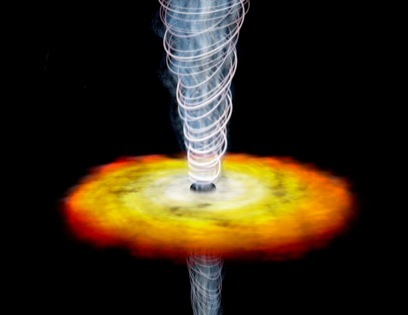Daniel Proga
Education
M.S., Nicolaus Copernicus University, Torun, Poland Ph.D., Nicolaus Copernicus Astronomical Center, Warsaw, Poland
Research Interests
Daniel Proga's main interests are accretion flows onto compact objects, related mass outflows and their environmental impact. He uses primarily numerical methods for astrophysical fluid dynamics to study effects of radiation and magnetic fields on gas under the influence of gravity. He also works on photoionization and radiative transfer processes.
Accretion onto black holes
Current projects include a study of accretion onto black holes. Some of the most dramatic phenomena of astrophysics, such as quasars and powerful radio galaxies, are powered by accretion onto supermassive black holes (SMBHs). Gamma-Ray Bursts (GRBs), the most powerful events in the Universe, are another illustration of the universal nature of black hole accretion. In the GRB case, matter accretes onto a much smaller, stellar mass black hole. As in many accreting objects, matter in GRBs is not only falling onto a black hole but some of it is also escaping in the form of a very energetic narrow jet, as shown on the picture.

The presence of a black hole does not guarantee that the source will be a powerful emitter of radiation. In fact, many SMBHs appear to spend most of their time in a remarkably quiescent state, the center of the Milky Way is a good example. SMBHs are embedded in the relatively dense environments of galactic nuclei and it is natural to suppose that the gravity due to an SMBH will draw in matter at high rates, leading to a high system luminosity. However, this simple prediction often fails as many systems are much dimmer than one would expect. In broadest terms, Dr. Proga works on understanding when and why some accreting black holes are and some are not powerful sources of radiation.
Mass outflows from accretion disks
When an accreting object is luminous, it is most likely because of the presence of an accretion disk. Examples of such objects include quasars, cataclysmic variables, and young stellar objects. Invariably, such disks are associated with mass outflows and winds. An obvious, and conceptually simple, mechanism for powering disk winds is radiation pressure on spectral lines. Using numerical techniques, Dr. Proga and his collaborators constructed a set of time-dependent two-dimensional radiation-driven disk wind models to identify a parameter domain where mass loss is significant. His numerical approach is motivated by a desire to account for the multi-dimensional character of the disk wind problem from first principles.
Dr. Proga's work has been supported by a number of research grants from NASA under various programs. His results find appreciation not only by among fellow scientists but also by wider community as illustrated by a press release posted by CNN or a "Sky and Telescope" article featuring results from his work on GRBs.
 Department of
Department of